The Right Way to Buy, Cut, and Serve Melon


Choosing the Perfect Melon
The test for watermelons is simple: Look at the underside, the paler part that didn’t see much sun. If it’s yellow, it’s ripe. If it’s greenish or white, it was picked too soon. Muskmelons are equally easy: Trust your nose. Sniff the stem end — if it smells sweet and irresistibly melony, it’s ready. If these indicators aren’t there, don’t bother; most varieties won’t ripen significantly off the vine.
Melon Skills: Cut and Serve
Whole melons can be stored at room temperature (refrigerate for a few hours if you prefer to eat it cold). Don’t cut into it until you’re ready to eat — that hard rind helps preserve the fruit. But after cutting, melons should be tightly wrapped, stored in the fridge and used within a few days. Wash the outside of any melon with warm soapy water before you cut into it — otherwise the knife’s blade may drag bacteria into the flesh.
Cutting a smaller melon is relatively simple, if messy. With a large knife, cut it in half, then scoop out the seeds — have a towel nearby to mop up the juices. A big specimen, especially one with a thick rind like watermelon, takes a little more muscle and finesse. Holding a large knife as you would for chopping vegetables, stick the tip into the top center of the melon and carefully pull the blade through the side closest to you. Turn the melon around and repeat on the other side. Put one half cut-side down on your cutting board and use the same method to split it into quarters; repeat with the other side. For any type of melon, we love to use a melon-baller to remove the flesh — it’s easy, it’s quick and kids (of all ages) love the shape.
With contributions by Bruce Weinstein and Mark Scarbrough.
Melon Glossary
Since most of us are already familiar with watermelon, cantaloupe and honeydew, we wanted to show off some of the lesser-known (and highly delicious) melons often available at the market. Here are a few of our favorites:
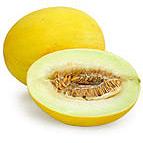
|
Canary |

|
Casaba |
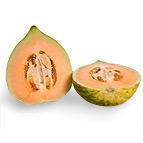
|
Crenshaw |
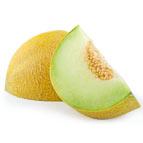
|
Galia |
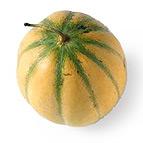
|
Ogen |
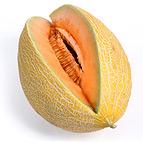
|
Persian |
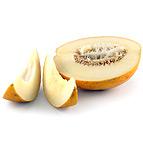
|
Sharlyn These beauties are relatively large and oblong, with beige-gold skin beneath a mosaic-like netting. Its sweet, cream-colored flesh tastes like a cantaloupe-honeydew combo. Sharlyns are quite perishable, so refrigerate them even before cutting, and eat within a few days. |